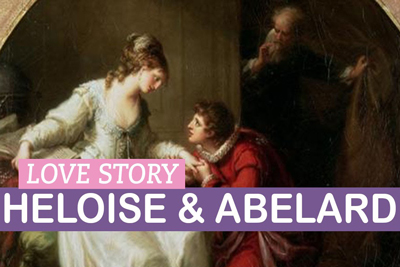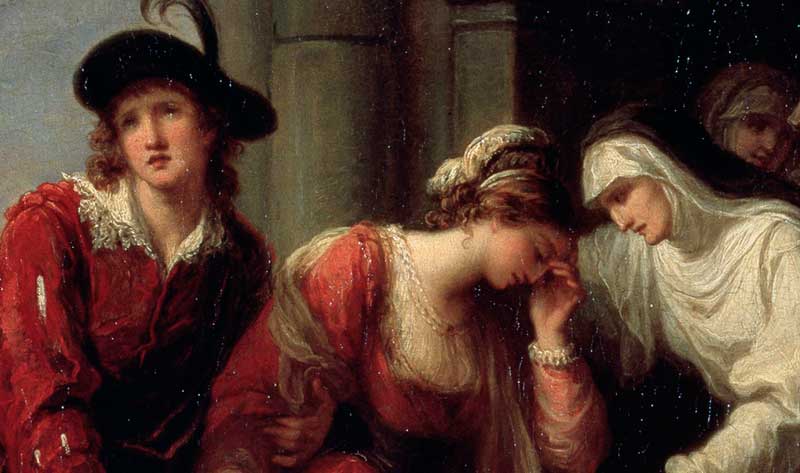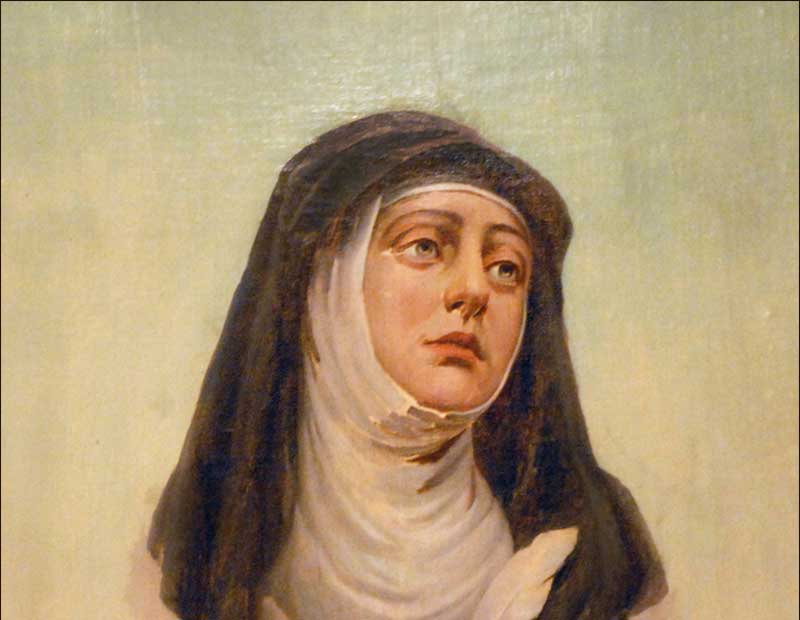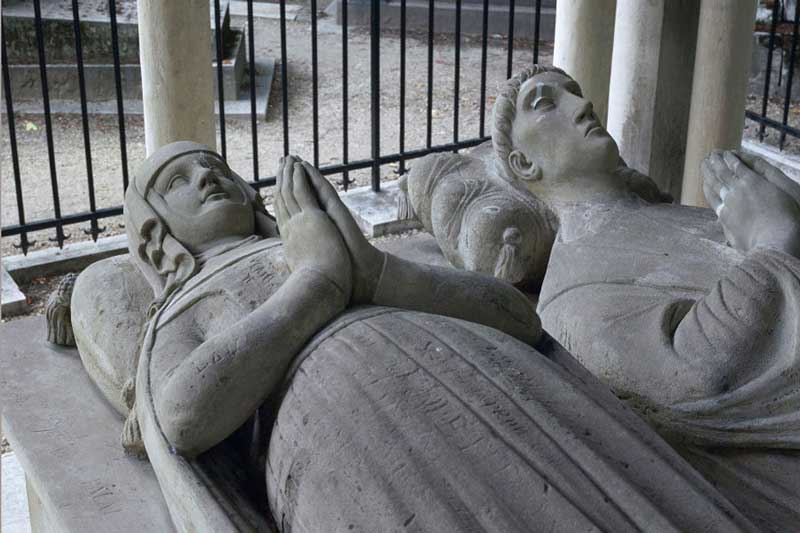
The story of the unbridled love of the 12th century theologian and philosopher Abélard for his student, twenty years his junior, Héloïse, is one of the most romantic love stories of history, which began with forbidden love and ended in tragedy and separation. Although doused in controversy, Peter Abélard, born in 1079, was a French theologian and philosopher, considered one of the greatest thinkers of the 12th century, who eventually, became one of the most famous teachers of philosophy at the great cathedral school of Notre Dame de Paris.
As the story says, during those days, he was mostly seen surrounded by crowds, as thousands of students were drawn from all countries by the fame of his teaching. Distinguished in figure and manners and enriched by the offerings of his pupils with universal admiration, he probably started to think of himself as the only undefeated philosopher in the world. However, in a letter to one of his friends, he confessed that he is in search of a mistress, who would help him pass his leisure time agreeably, but although several women had caught his attention, he was not looking for easy pleasure and wished to find some obstacles, that he would overcome with the greater glory and pleasure. Nevertheless, soon a beautiful young woman in Paris caught his eye and she was Héloïse.

The beautiful Héloïse, born around 1101, was living at the Îls de Cité within the precincts of Notre Dame, under the care of her uncle, the canon Fulbert, whose love for her was no less than his desire that she should have the best possible education that he can afford for her. With his proper guidance and care, Héloïse turned out to be one of the most well-educated women of her time, known to be a brilliant scholar with remarkable knowledge and well-versed in Latin, Greek and even in Hebrew. With the progress of time, Héloïse became a well-educated real beauty, the pride and joy of her uncle, Canon Fulbert, known to be a truth-seeker and was questioning human existence as a student of life and great abiding knowledge.
The 37 years old Abélard, in his prime as a teacher of philosophy and theology, helplessly fell for the beautiful Héloïse in her early twenties and became desperate to get an opportunity to get acquainted with her, intending to seduce her.

Luck favoured Abélard, as he got his much desired opportunity soon, when Fulbert requested him, one of France’s most respected scholars, to take the responsibility to teach Héloïse, which he gladly accepted. However, within a short while, in the pretext of several difficulties to teach Heloise from his own residence, he convinced Fulbert to allow him to move into their home.
After tactfully making a full entry into Fulbert’s house as the house tutor of the naive girl, Abélard took full advantage of the situation and made the best use of his captivating charisma to seduce her and although Heloise was initially reluctant or hesitant, finally she gave in and despite their age difference, she returned his devotion and they became intimate lovers.

However, the lovers were separated as Fulbert became aware of their affair, but the separation did not deter them to continue the affair in secret and soon Héloïse realized she was pregnant. Sensing immediate trouble, she left her uncle's house in his absence and Abélard moved her to his family home in Brittany, where she gave birth to a son, named Astrolabe. To appease her furious uncle, Abélard asked for Fulbert's forgiveness and proposed a secret marriage, to which he agreed, but Héloïse vehemently opposed the idea as such a marriage would be disgraceful for her and the name of mistress instead of the wife would be dearer and more honourable for her. Although her refusal was unconventional and was considered gravely sinful at the time and a risk to her soul’s salvation if she did not repent, her ideas about relationships were as counterculture as her education. Nevertheless, Abélard struggled to persuade Héloïse to marry him under such conditions, as he desperately wanted to keep the marriage a secret to protect his well-established career and safeguard the prospect of his advancement in the church. Eventually, she had to give in to pressure reluctantly, but as the secret of the marriage was not kept by Fulbert, Héloïse boldly denied it, which made her life extremely difficult and she had to seek refuge in the convent of Argenteuil. But this move on the part of Héloïse led her uncle and kinsmen to believe that Abélard wanted to get rid of her and had cast her off, forcing her to become a nun. Violently incensed, they hatched a plot to take revenge and one night, while Abélard was unsuspectingly asleep in his room, a band of men broke into Abélard’s room and had vengeance on him with the most cruel punishment, when he was castrated.

Following the humiliation of castration, Abélard became a monk and also persuaded Héloïse to become a nun, which she did not want to do. She curses her hypocrisy of loving God as a nun, while still loving Abélard as a woman, wishing nothing more than to return to him, which was an absolute impossibility. However, although separated forever, the pair continued to write each other letters and today their letters are among the best known records of early forbidden romantic love. However, the letters also remained as a great topic of discussion among scholars, since Abélard was the teacher of Héloïse and some maintain that he unethically took advantage of his position. In addition, Heloise clearly expressed her disliking about the institution of marriage, going so far as to call it prostitution. Some also maintain her letters as one of the earliest contributions to feminist philosophies. Nevertheless, Abélard and Héloïse now rest side by side in Père Lachaise Cemetery, the largest cemetery in Paris.

The letters of Abélard and Héloïse are among the best known records of early forbidden romantic love, although it is unclear how they came to be preserved. Probably, they were kept by Héloïse and more than a century after her death they were brought to Paris and copied. One of the first people to show a deeper interest in the couple appears to have been Francesco Petrarca (1304-1374), commonly anglicized as Petrarch, a scholar and poet of early Renaissance Italy, who owned an early 14th-century manuscript of the couple's letters. But the first printed editions of the letters, in Latin, were in Paris in 1616, simultaneously in two editions.
